|
OutdoorIllinois
VOLUME VIII, NUMBER 9
OUTDOOR ILLINOIS is published monthly by the Department of Natural Resources, Office of Public Services, 524 S. Second St., Springfield, IL 62701-1787, phone (217) 782-7454, e-mail editor@dnrmail.state.il.us.
(Publication number: ISSN 1072-7175)
Periodical Postage Paid at Springfield, IL POSTMASTER: Send address changes to OUTDOOR ILLINOIS, Department of Natural Resources, Dept. NL, 524 S. Second St., Springfield, IL 62701-1787.
George H. Ryan Governor
Brent Manning Director
James D. Garner Deputy Director
Richard Mottershaw Deputy Director
STAFF: James L. Fulgenzi, office director; Gary Thomas, editor; Liz Pensoneau, managing editor; John Alien, staff writer; Adele Hodde, chief photographer; Chas. J. Dees, staff photographer; Charles J. Copley, design & layout; Cheryl Gwinn, production coordinator; Vera Lynn Smith, circulation.
Illinois Department of Natural Resources
Internet Address: http://dnr.state.il.us
Staff-written material appearing in this publication may be reprinted without permission, provided that OUTDOOR ILLINOIS, Illinois Department of Natural Resources, is acknowledged as the source. OUTDOOR ILLINOIS assumes no responsibility for the return of unsolicited manuscripts or illustrations.
Equal opportunity to participate in programs of the Illinois Department of Natural Resources (IDNR) and those funded by the U.S. Fish and Wildlife Service and other agencies is available to all individuals regardless of race, sex, national origin, disability, age, religion or other non-merit factors. If you believe you have been discriminated against, contact the funding source's civil rights office and/or the Equal Employment Opportunity Officer, DNR, 524 S. Second, Springfield, IL 62701-1787; 217/785-0067; TTY 217/782-9175.
All public meetings conducted by the Department of Natural Resources will be accessible to handicapped individuals in compliance with Executive Order No. 5 and pertinent state and federal laws, upon notification of the anticipated attendance. Handicapped persons planning to attend and needing special accommodations should inform the Department of Natural Resources at least five days prior to the meeting by telephoning or writing the Equal Employment Opportunity Officer, Department of Natural Resources, 524 S. Second St., Springfield, IL 62701-1787, phone (217) 785-0067.
Department of Natural Resources information is available to the hearing impaired by calling DNR's Telecommunications Device for the Deaf (217) 782-9175.

Printed by the Authority of the State of Illinois PRT3216173-28,395-7/01 Illinois Department of Natural Resources Printed on recycled and recyclable paper with soy-based ink.

Illinois Department of
Natural Resources
|
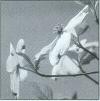
2 Tree Trouble
One of the "signs of spring" is
experiencing some hard times.
4 Knock on Wood
Proper timber management can
result in big tree profits.
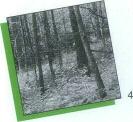
7 Cache Value
A paddler travels down the
Cache River in southern Illinois,
exploring the wetland's beauty
while debunking swamp myths.
10 A World Apart
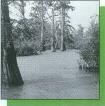 From Elsah's charming streets
to Cairo at the southernmost tip
of the state, our drive down the
Great River Road brings home
the diversity of Illinois.
From Elsah's charming streets
to Cairo at the southernmost tip
of the state, our drive down the
Great River Road brings home
the diversity of Illinois.
16 City Fishing
You don't have to leave the city
to find good bass fishing.
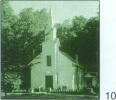
19 Gun Shy
Squirrel hunting has declined in
the past decade. Where have all
the hunters gone?
20 NewsFront
 We'll tell you how DNR has
made buying licenses online
even easier, how to pick up a
new hunting digest, about
CARA's future, how you can
become an outdoors woman,
two hunting and fishing day celebrations, about a roaming cat,
wine and art and big boat grants
in this month's NewsFront.
We'll tell you how DNR has
made buying licenses online
even easier, how to pick up a
new hunting digest, about
CARA's future, how you can
become an outdoors woman,
two hunting and fishing day celebrations, about a roaming cat,
wine and art and big boat grants
in this month's NewsFront.
On the cover...
DNR photographer Adele Hodde took this
month's cover photo of a raccoon walking
the shoreline at Sangchris Lake.
|
September 2000
Take another look at
that raccoon on the
cover. Seems pretty
cute and harmless, doesn't it?
But when you hear the
unmistakable sound of one of
its relatives rooting through
your garbage at 3 a.m., that
perception changes radically.
The cuddly looking masked
bandit suddenly becomes
a nuisance.

In rural areas, hunting
and trapping are important tools for
managing abundant wildlife and the
problems they can cause. We've
expanded raccoon hunting and trapping
seasons five times in the last decade,
and those who run a treeing walker or a
trapline are enjoying some of the most
liberal harvest seasons of their lifetimes.
They also are helping to curb some of
the problems that accompany a near-record raccoon population.
However, managing wildlife in our
cities and towns presents different challenges. For the most part, hunting and
trapping are not practical. Our bird feeders, fruit trees and trash provide a smorgasbord for wildlife that have learned to
live near humans-animals like raccoons,
opossums, skunks, squirrels and coyotes.
Many of these animals aren't just getting
by in urban and suburban
areas-they're thriving.
In 1999, there were nearly 68,000 nuisance problems
reported, most of which
occurred in the Chicago
metropolitan area. Many of
these could have been
avoided by removing food
sources and animal-proofing
homes. As the saying goes,
"an ounce of prevention is
worth a pound of cure."
Homeowners have three options
when unwanted wildlife guests have
moved in. About 170 city and county
animal control units have Nuisance
Wildlife Control Permits. Your local
agency can tell you if they service
wildlife complaints and, if so, what
kinds of assistance they provide. Commercial businesses have cropped up in
most cities and can be located through
the yellow pages or by calling a DNR
office. Make sure the person you hire
has a Nuisance Wildlife Control Permit.
Homeowners who want to remove
animals themselves must obtain a permit from a DNR office. We generally
discourage this approach, recommending a professional instead. All too
often, do-it-yourselfers are ill prepared
for what can happen.
Removing an animal from your
home is a necessity, but is a short-term solution. More likely than not, a
bump in the night will signal another
intruder unless you follow up with
exclusion and removal of food sources.
Here are some suggestions:
Keep pet food and water dishes
indoors, especially at night.
Use metal or durable plastic trash
containers; and secure the lids with
elastic cords.
Move any bird feeders away from the
house. Try using a feeder with a gravity-operated treadle to prevent access
by squirrels and raccoons.
Don't feed any stray animals that
could later become a problem.
Trim branches that extend over the
roof; install a commercially-available
chimney cap; and repair broken or
weak areas of your roof.
Remove piles of brush, old appliances
and junk from your property; and initiate community clean-up projects to
remove brush, tall grass and rubbish
from vacant lots in the neighborhood.
For more suggestions, contact the
Department's Clearinghouse (217) 782-7498 to request copies of "Keeping
Wildlife Out of Your Home" and "Nuisance Raccoons in Urban Settings."
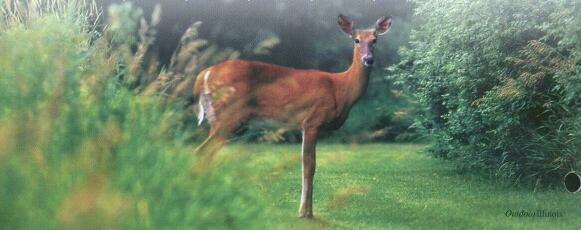
|

